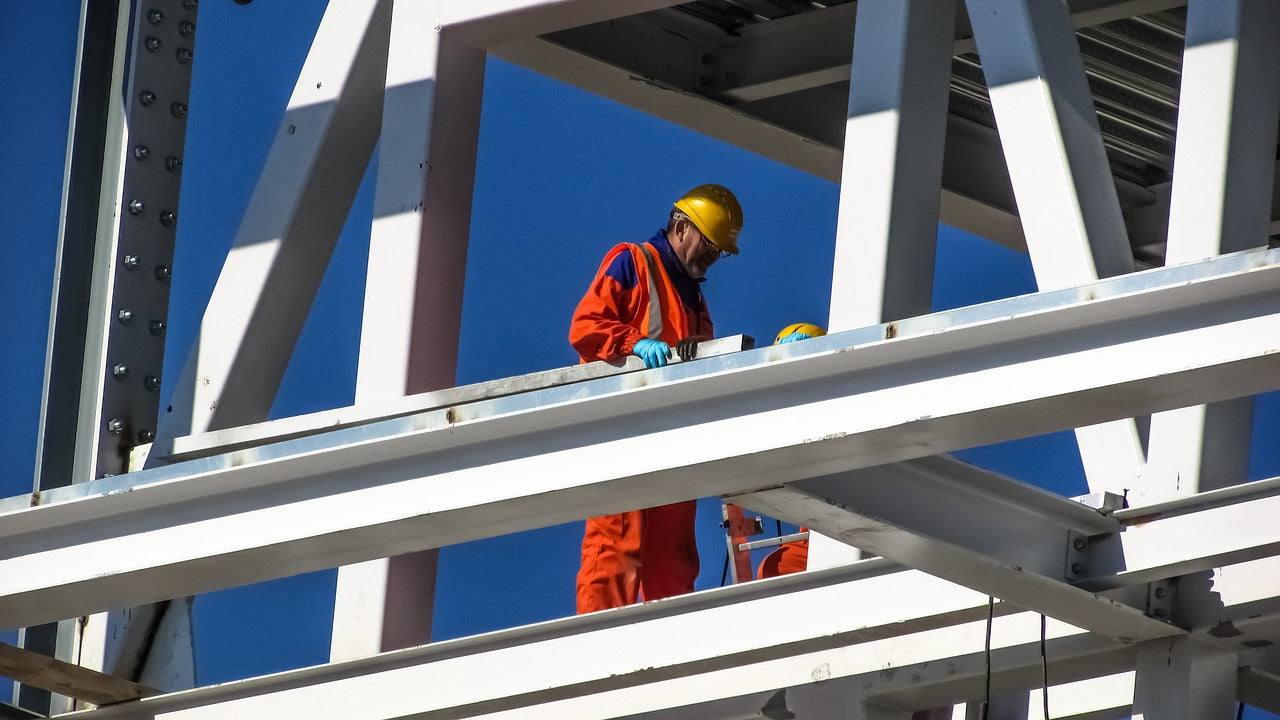Working at height can be incredibly dangerous, and it’s one of the biggest causes of fatalities or serious injuries whilst at work in the UK. In order to reduce the risks associated with working at height, there are strict legal requirements that construction companies and employees have to adhere to.
In this article, we cover just about everything you need to know when it comes to working safely at heights, including legislation, employer and employee responsibilities, and best practices.
Stay compliant with UK law and keep yourself, your employees and the public safe whilst at work or on construction sites.
What Exactly Does Working At Height Cover?
The kinds of jobs that constitute working at height might seem pretty self-explanatory, but we thought it was best to offer a refresher. The Health and Safety Executive (HSE) defines working at height as any work where someone could fall a distance that could cause injury.
This includes things like:
-
Working on ladders
-
Working on scaffolding
-
Working on roofs
-
Using mobile elevated work platforms
-
Working near edges
-
Work within deep pits or excavations
What Is The Legislation For Working at Height?
There are a number of different legislative bodies that govern the safety regulations around working at height. These are a few of the locations you’ll need to be aware of to ensure you remain compliant at all times.
The Work At Height Regulations 2005
This is the primary legislation governing working at height in the UK. The Work At Height Regulations 2005 apply to all employers, self-employed people and anyone who controls any work at height activities.
The key principles of the Work At Height Regulations 2005 are:
-
Avoiding working at height wherever possible
-
Use the safest equipment and controls if it’s necessary to work at heights (this includes high-quality roof guardrails and galvanised access ladders)
-
Implement measures to minimise the consequences of falls
-
Ensure all work at height is properly planned, supervised and carried out by competent individuals
The Health and Safety at Work Act 1974
The Health and Safety at Work Act 1974 is an overarching legislation that encompasses the general duties employers must have to ensure their employees are safe at work. This includes things like PPE, risk assessments, and safety measures that employers must implement to keep their employees safe.
Next Up, Employer Responsibilities
We know that legislative documents can sometimes be filled with jargon that is difficult to understand. For that reason, we’ve broken down the responsibilities of employers to ensure that you are staying compliant.
In order to keep employees safe and ensure they remain compliant, employers must:
-
Conduct risk assessments before beginning working at height.
-
Ensure all work is properly planned, organised and supervised.
-
Provide suitable fall prevention or protection equipment.
-
Ensure all employees have adequate training in working at heights.
-
Regularly inspect equipment used for work at height.
-
Consider the weather when planning any work at height.
Ensuring you keep all these responsibilities at the front of your mind will keep you compliant and, more importantly, keep your employees safe whilst they’re on the job.
So, What Are The Employee Responsibilities?
Much like employers, employees also have responsibilities to ensure they are safe at work. These are some of the responsibilities you have as an employee:
-
Following training and advice provided by the employer.
-
Using safety equipment correctly.
-
Reporting any issues or defects with equipment.
-
Avoiding any reckless behaviour that might lead to endangerment of themselves or others.
What Happens If I Don’t Ensure Compliance?
When it comes to ensuring working at height compliance, there are penalties if you don’t comply. The penalties range in severity based on the type of breach, but you could end up with a fine of up to millions of pounds for severe breaches.
You can also be prosecuted under the Health and Safety at Work Act 1974, and you may leave yourself open to workplace injury claims or lawsuits. If you’re not compliant, though, you aren't just leaving yourself open to potential monetary penalties – you also leave your employees at risk of serious injury or even death.
Everyone should feel safe at work, and ensuring you’re compliant with the most up-to-date working at height regulations means your employees can go home safely to their families at the end of their work day.
To Wrap Things Up
Understanding and complying with the legal requirements for working at height is vital for both employers and employees. When you understand how to ensure compliance, you ensure that you, your employees, and the general public are always safe on your job sites.
If you need to upgrade your equipment or you’re looking for some additional advice on keeping your site safe, you can contact us today for guidance.

